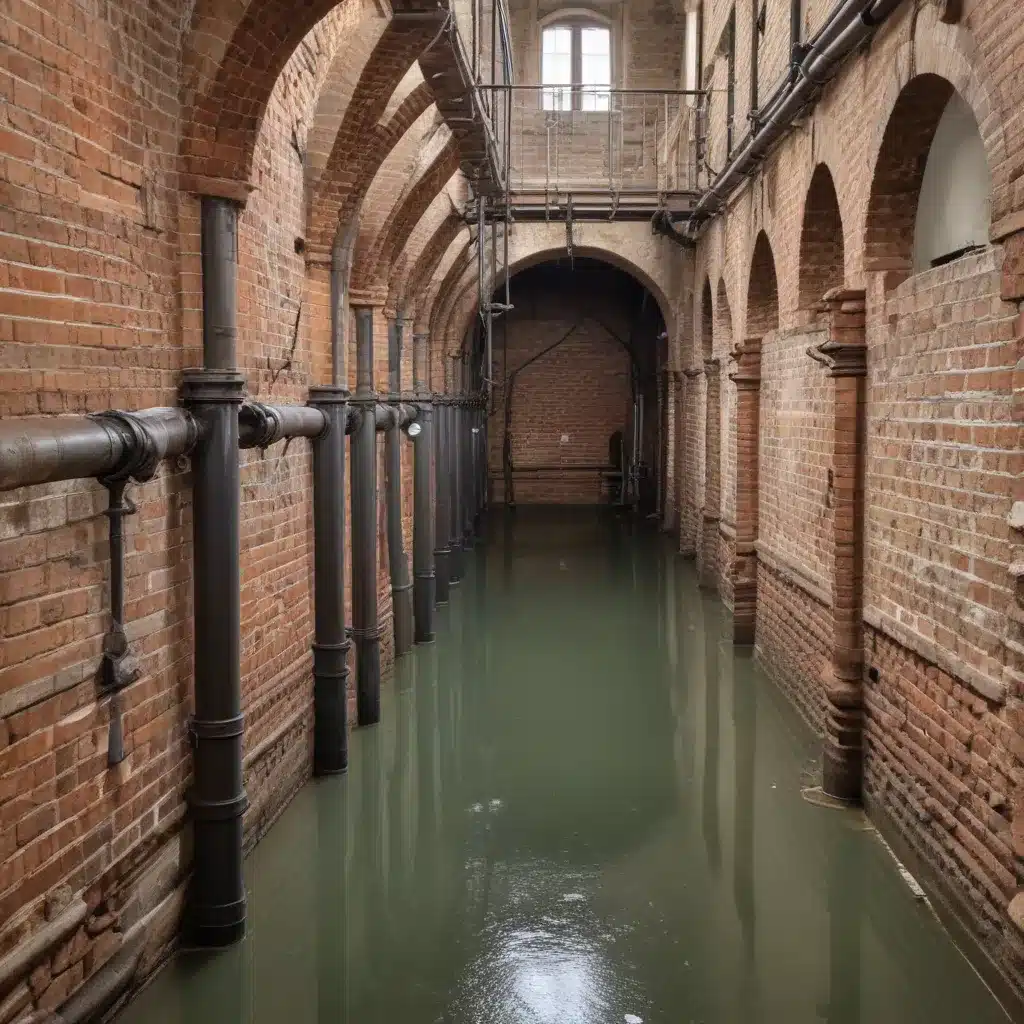
Plumbing systems in historic buildings often face unique challenges when undergoing comprehensive renovations. Integrating innovative pipe relining techniques can be a game-changer for restoring structural integrity, improving hydraulic performance, and extending the lifespan of aging drainage networks – all while preserving the original architectural character. This article will explore best practices for implementing trenchless pipe rehabilitation methods in sustainable building retrofits with limited workspace access.
Pipe Rehabilitation Methods
Trenchless Pipe Relining
Traditional pipe replacement often involves extensive excavation, which can be highly disruptive and impractical in historic structures with restricted access. Trenchless pipe relining techniques, on the other hand, allow drainage systems to be rehabilitated from the inside without the need for major digging or demolition work. This minimally invasive approach is particularly well-suited for historic buildings, as it avoids damage to delicate finishes, landscapes, and structural elements.
One of the most common trenchless methods is cured-in-place pipe (CIPP) lining. This process involves inserting a resin-impregnated flexible liner into the existing pipe, which is then inflated and cured to form a seamless new pipe within the old one. CIPP lining can restore structural integrity, seal leaks, and improve hydraulic capacity – all without excavation. Another trenchless option is epoxy pipe coating, where a protective epoxy resin is spray-applied to the interior of the pipe, creating a durable, corrosion-resistant barrier.
Drain Rehabilitation Considerations
Before selecting the appropriate pipe relining technique, it’s crucial to conduct a thorough assessment of the existing drainage system. This includes evaluating the structural integrity of the pipes, the hydraulic capacity required for the building’s needs, and the extent of any corrosion or scaling within the system.
Structural surveys using closed-circuit television (CCTV) inspection can identify cracks, deformation, and other structural defects that may require repair or lining. Hydraulic modeling can determine the optimal pipe sizes and flow rates to meet current and future demand. And water quality testing can pinpoint issues like mineral buildup or biological growth that could impact long-term performance.
Historic Building Renovations
Sustainable Design Principles
When rehabilitating plumbing and drainage systems in historic structures, it’s essential to align these improvements with broader sustainable design principles. This may include energy-efficient measures like high-performance fixtures and recirculation systems to reduce water and energy consumption. Water conservation strategies, such as rainwater harvesting and greywater reuse, can further minimize the building’s environmental impact.
The selection of materials is also crucial – prioritizing durable, long-lasting components that can be easily maintained and, when necessary, repaired or replaced. Reusing or repurposing existing plumbing infrastructure, where feasible, is another way to reduce the carbon footprint of the renovation.
Restricted Access Challenges
Implementing pipe relining techniques in historic buildings often involves navigating significant workspace constraints. Narrow corridors, low ceilings, and load-bearing walls can limit the access and manoeuvrability of equipment. Careful planning and adaptable installation methods are essential to overcome these physical barriers.
Noise and vibration control is another key consideration, as disruptive construction activities can impact the building’s occupants and delicate architectural features. Debris containment and disposal procedures might want to also be meticulously managed to prevent the spread of hazardous materials or damage to sensitive interiors.
Regulatory Compliance
Building Code Requirements
When undertaking plumbing system upgrades in historic buildings, compliance with the latest building codes and standards is critical. This may involve upgrading the main drainage lines to meet current capacity requirements, enhancing fire safety systems, and improving accessibility to meet modern accessibility guidelines.
Navigating the nuances of historic building code compliance can be challenging, as certain exemptions or alternative compliance paths may be available. Close collaboration with local authorities and specialized plumbing consultants can help double-check that the project meets all necessary regulations while preserving the integrity of the original structure.
Environmental Regulations
In addition to building codes, plumbing and drainage projects in historic buildings might want to also adhere to strict environmental regulations. This includes obtaining the appropriate wastewater discharge permits, properly handling and disposing of hazardous materials, and achieving sustainability certifications (such as LEED or BREEAM) to demonstrate the building’s environmental performance.
Careful planning and coordination with regulatory bodies are essential to double-check that the project meets all environmental compliance requirements without compromising the historic value of the building.
Project Planning and Implementation
Preliminary Assessments
Successful pipe relining projects in historic buildings begin with comprehensive site surveys and inspections. This includes mapping the existing plumbing and drainage infrastructure, identifying potential access challenges, and reviewing historical records to understand the building’s original design and any past modifications.
Utility coordination is also crucial, as the renovation work may impact or be impacted by other building systems, such as electrical, gas, or telecommunications networks. A thorough understanding of the site’s constraints and the integration of various building systems is key to a well-executed project.
Installation Techniques
When it comes to the actual installation of pipe relining methods, attention to detail and workflow optimization are paramount. The setup of specialized pipe lining equipment, such as CIPP liners or epoxy spray applicators, might want to be carefully planned to navigate the restricted access conditions.
Equally important are the quality assurance protocols put in place to double-check that a successful outcome. This may involve pre-lining pipe cleaning, post-lining inspections, and comprehensive testing to verify the restored structural integrity and hydraulic performance of the rehabilitated drainage system.
By implementing innovative pipe relining techniques within the context of sustainable historic building renovations, plumbing professionals can deliver cost-effective, minimally disruptive solutions that preserve the character and functionality of these cherished structures. Through a combination of robust planning, specialized expertise, and close collaboration with all stakeholders, these complex projects can be executed to the highest standards of quality and compliance.
For more information on plumbing design, installation, and maintenance services for historic buildings in the UK, please visit Plumbing Drains North Wales.Tip: Always verify water pressure ratings with a certified plumber

